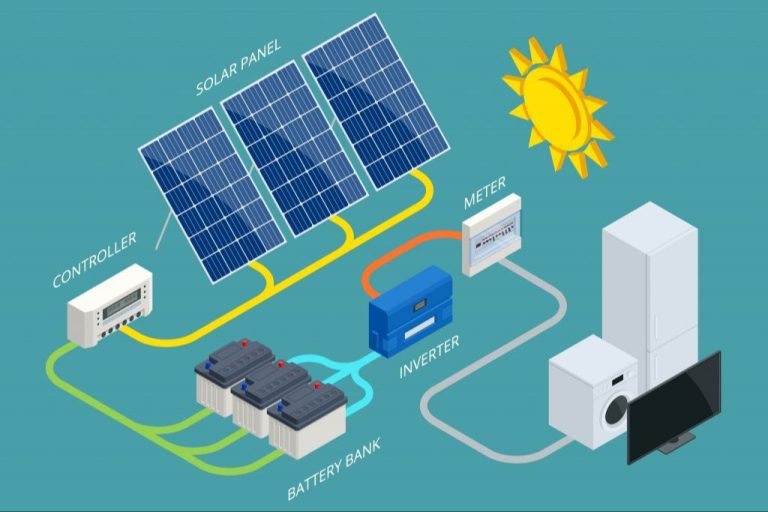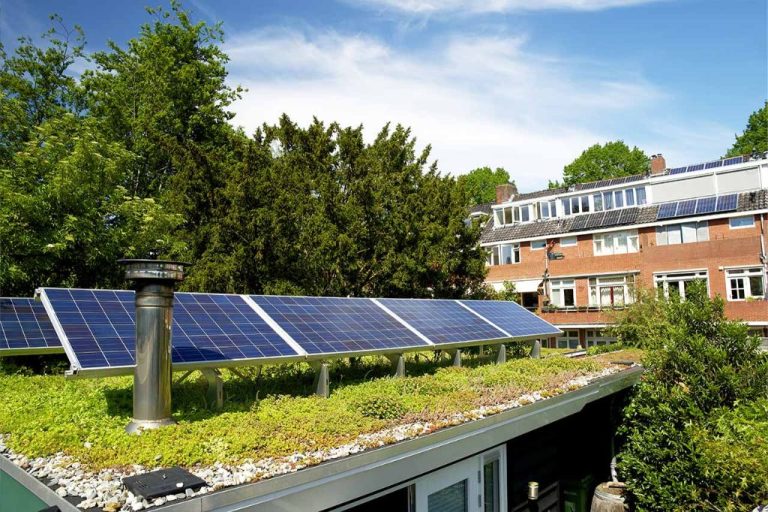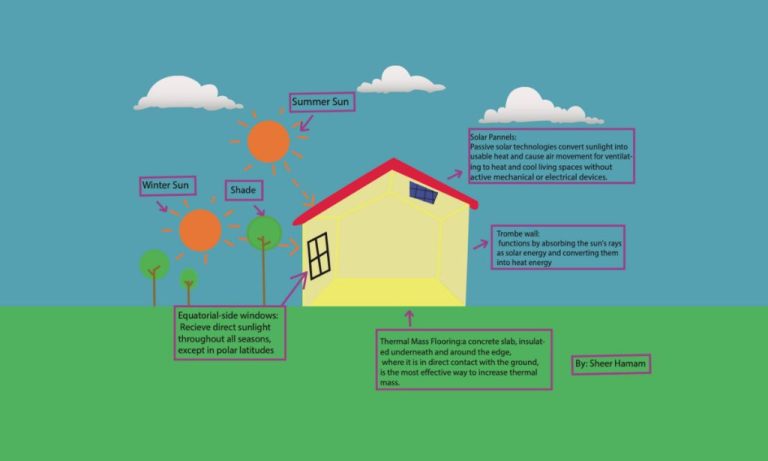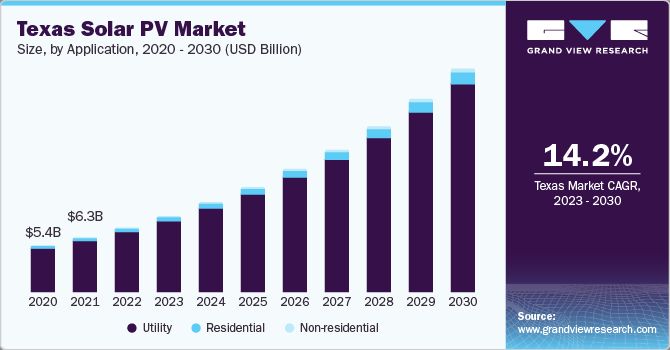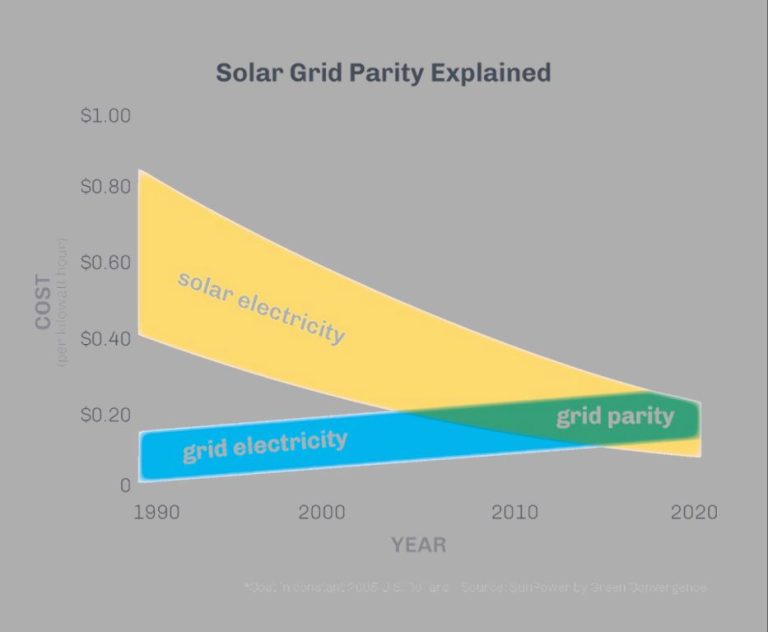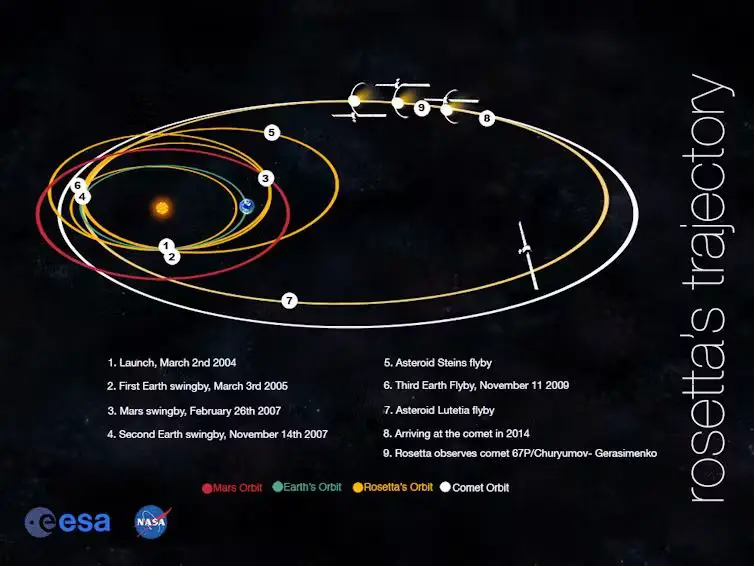How Does Electricity Flow From Solar Panels?
Solar panels are devices that convert sunlight into electricity. They are made up of solar cells, which are special materials able to absorb photons from sunlight and release electrons. When these free electrons are captured, an electric current is produced that can be used as electricity.
Solar power is becoming increasingly popular as a renewable source of energy. Solar panels can be installed on rooftops or ground-mounted arrays to generate clean electricity without any emissions. With solar panel costs decreasing and efficiency increasing over the past decade, solar energy is now affordable and accessible to more homeowners and businesses than ever before.
Solar electricity offers many benefits. It diversifies energy supply, reduces dependence on fossil fuels, creates jobs, and lowers carbon emissions. With abundant sunshine available in many parts of the world, solar power has the potential to supply a significant portion of global electricity demand. As solar technology continues advancing and adoption spreads, solar energy will play a critical role in the worldwide transition to renewable energy sources.
How solar cells convert sunlight to electricity
Solar cells convert sunlight into electricity through the photovoltaic effect. When photons from sunlight strike the solar cell, they transfer their energy to the electrons in the cell’s semiconductor material, causing the electrons to break free from their atoms. This generates electron-hole pairs as the freed electrons move to a higher energy state, leaving holes where the electrons were. The electrons want to return to a lower energy state, so there is a natural flow of electrons from the solar cell’s n-type semiconductor layer to its p-type layer. This movement of electrons creates electricity. Metal conductive plates on the solar cell collect the electrons on the n-type layer and route them through connecting wires, harnessing the electricity.
Solar cells have a crystalline silicon structure made of an ultra-thin wafer, usually octagonal or pseudo-square. The wafer has an n-type phosphorus-doped layer on top and a p-type boron-doped layer on the bottom. At the junction between these two layers, the free electrons on the n-type side migrate to the holes on the p-type side, generating a voltage differential. The top has an anti-reflective coating to absorb more sunlight, while the back has a metallic conductive plate to collect electrons.
Silicon is the predominant material for solar cells because it has an ideal bandgap energy that absorbs photons efficiently from the solar spectrum. The crystalline structure also provides stability. During manufacturing, silicon is purified, grown into a crystalline ingot, sliced into wafers, doped, coated, and then assembled into a solar cell. Further research aims to improve silicon solar cell efficiency beyond the theoretical limit of around 29% for a single-junction cell.
Wiring Solar Cells into Solar Panels
Solar cells are the individual components that convert sunlight into electricity. To produce enough power for practical use, solar cells need to be wired together into modules called solar panels.
Solar panels consist of solar cell circuitry sealed behind a tempered glass front with a sturdy backing. The solar cells are meticulously wired together and assembled into a weatherproof package. This protects the solar cells from corrosion and allows the panels to withstand exposure to the elements for decades.
Each solar cell produces a small amount of direct current (DC) electricity when exposed to sunlight. Connecting solar cells in series increases the voltage, while connecting them in parallel increases the current. Solar panels combine solar cells in both series and parallel to produce a useful voltage and current for power generation.
Solar panels have bypass diodes wired across each cell or string of cells. This allows current to bypass any cells that are covered by shade or debris and not producing electricity. Without bypass diodes, shaded cells could become hot-spots that overheat and cause damage.
The internal wiring of solar panels connects each cell properly through a junction box. This box on the back of the panel has terminals to output the generated electricity. The junction box also contains the diodes and circuitry for bypassing shaded cells.
High quality solar panels are weatherproofed and sealed to protect the internal components. The glass, backing, seals and junction box are all designed to prevent moisture and corrosion over decades of exposure to the elements.
Direct current to alternating current
Solar panels produce direct current (DC) electricity, but most household appliances and the electrical grid run on alternating current (AC) electricity. An inverter is needed to convert the DC output from solar panels into AC electricity. Inverters play a crucial role in linking solar panels to the grid.
Inverters convert the DC output from solar panels into AC by using power electronics to switch the DC back and forth at a very high frequency to produce an AC waveform. Grid-tie inverters synchronize this AC output with the grid voltage and frequency. Inverters also provide key safety features and monitoring capabilities.
Microinverters convert the DC at each individual solar panel, while string inverters convert the combined DC from multiple panels on a “string”. Central or standalone inverters convert the DC from the entire solar array. More advanced inverters can provide reactive power, voltage regulation, and other smart grid capabilities.
The inverter is one of the most complex components of a solar energy system. Quality inverters with robust features are essential to maximize energy production, monitoring, and safety. Proper inverter sizing and installation is also critical to achieve optimal system performance. As solar power grows globally, improvements in inverter technology will help unlock the full potential of solar energy.
Connecting solar panels to the electrical grid
Solar panels generate direct current (DC) electricity, but household appliances run on alternating current (AC). To connect solar panels to the grid, the DC electricity must be converted into AC electricity using an inverter. The inverter is connected on one end to the solar panels, and on the other end to the household electrical panel and utility meter.
For grid-tied solar panel systems, the inverter synchronizes the frequency and phase of the current to match the utility grid. This allows the solar panels to seamlessly provide power when the sun is shining and draw power from the grid when needed. Any excess electricity generated can flow back into the grid in a process called net metering.
With net metering, the electricity meter can spin backwards when the solar panels produce more electricity than the home is using. This offsets electricity drawn from the grid at night or on cloudy days. At the end of the billing cycle, you only pay the utility company for your net electricity usage.
Feed-in tariffs provide additional financial incentives by requiring utility companies to pay homeowners for excess electricity fed back into the grid. The rate paid per kilowatt-hour is higher than the retail electricity rate to account for the environmental benefits.
Grid-tied systems with net metering or feed-in tariffs allow solar panel owners to reduce their electricity bills while also supporting the grid with clean, renewable energy.
Solar panel racking and mounts
Solar panels need to be properly mounted and angled to maximize energy production. There are several options for racking and mounting solar panels:
Rooftop mounts
For residential rooftop solar, panels can be mounted flush on the roof or tilted at an angle. Flush mounts are simpler and less expensive, but angled mounts optimize energy capture. Rooftop mounts are secured by penetrating the roof or ballasting with heavy material. Penetrating mounts are more secure, while ballasted systems avoid roof damage.
Ground mounts
Ground-mounted solar panels allow the panels to be optimally angled without roof constraints. The racks are mounted into the ground with driven piles or concrete footings. Ground mounts require land area and zoning approval but provide flexibility in panel orientation.
Solar trackers
Single-axis and dual-axis trackers automatically move solar panels to follow the sun throughout the day. By continually optimizing the angle to the sun, trackers can increase energy production by 25-30% compared to fixed mounts. However, trackers are more complex and costly to install and maintain.
Monitoring and Maintenance
Solar panels require regular monitoring and maintenance to keep them operating efficiently. Here are some key tasks:
Cleaning Panels
Dirt, dust, bird droppings, pollen and other debris can accumulate on solar panels over time, reducing their productivity. It’s recommended to clean solar panels at least 2-4 times per year. Use a soft brush and mild soap and water to gently clean the panels without damaging them. Avoid abrasive cleaners or brushes that could scratch the protective glass surface.
Monitoring Production
Most solar panel systems have monitoring software that tracks energy production. Review this regularly to make sure your system is performing as expected. Look for any dips in production that could indicate a problem. Monitoring helps identify issues like debris buildup, inverter failure, or wiring problems before they severely impact system output.
Troubleshooting
If you notice a dip in energy production, first visually inspect the system to check for any obvious problems like debris buildup, damage, or wiring issues. Check connections and wiring for loose connections or damage from weather or animals. Inspect the inverter, which converts DC electricity from the panels to AC electricity, to make sure it is functioning properly and not malfunctioning. Call a solar technician if you are unable to identify the cause of underperformance.
Safety Considerations
Installing and maintaining solar panels comes with some safety risks that need to be addressed. The three main safety concerns with solar panels are electrical hazards, roof safety, and having a properly grounded system.
Solar panels produce direct current electricity that can cause electric shock or electrocution if proper safety precautions are not taken. Only qualified electricians should handle the electrical connections and wiring of solar panels. Safety gear like insulated gloves and tools should be used when working on solar panels. The system should be completely shut off before any maintenance work is performed.
Working on rooftops also poses hazards like falls or injuries from lifting heavy equipment. Proper fall protection, anchors, restraints and ladders should be used. Workers should wear slip-resistant shoes and helmets for rooftop solar work. Extra care needs to be taken when working on angled or slippery roofs.
The solar panel system must be properly grounded to prevent electric shocks and fires. All metal components should be bonded and grounded. The grounding wires need to be the proper gauge size. Ground faults must be detected and interrupted. Regular inspection of grounding components is important.
Following safety protocols and having proper training on electrical and roofing work is critical when installing or servicing solar panels to prevent accidents and injuries.
Solar Energy Storage
For solar power systems to provide electricity at night or during cloudy weather, there needs to be a way to store the energy produced by the solar panels. There are several methods for storing solar energy, with batteries being the most common for residential systems.
Batteries allow solar panel systems to operate off-the-grid, meaning they do not need to be connected to the utility electrical grid. Popular battery options for home solar systems include lead-acid batteries, lithium-ion batteries, and saltwater batteries. Lead-acid batteries are inexpensive but need maintenance. Lithium-ion batteries have a longer lifespan but a higher upfront cost. Saltwater batteries use salt to store energy and are an emerging technology.
When connected to the grid, batteries can provide backup power if the grid goes down. They also allow for load shifting, which means storing excess solar energy during the day and using it when electricity rates are higher in the evening. This allows homeowners to reduce energy costs by maximizing self-consumption of solar power.
Battery storage enables solar power systems to provide reliable electricity day and night. As battery technology continues to advance and costs decline, pairing storage with solar will become increasingly commonplace for homes and businesses worldwide.
The future of solar power
The future looks bright for solar power. As technology improves, solar panels are becoming more efficient and cost-effective every year. Here are some of the key ways that solar power is likely to advance in the near future:
Improving efficiency
Researchers are finding new ways to squeeze more electricity out of sunlight. Some advanced solar panels on the market today have efficiencies of over 20%, compared to around 15% for standard panels. Emerging technologies like perovskite solar cells and organic PV could push efficiencies even higher in the coming years.
New technologies
Companies are developing creative new forms of solar technology, such as solar windows and roof tiles. These innovations could help solar power blend seamlessly into buildings and infrastructure. Flexible, lightweight solar panels are making it easier to install solar on curved surfaces. There are also advances in solar thermal technology and concentrated solar power.
Growth projections
Solar power has been growing exponentially over the past decade, and is now the fastest growing energy source worldwide. It’s projected that solar could provide up to 20% of global electricity by 2030. As prices continue to fall, solar is becoming cost competitive with fossil fuels in more markets, accelerating adoption.
With solar technology improving and costs decreasing, the future is looking very bright. We can expect to see solar panels on more and more rooftops, vehicles and structures in the coming years as this renewable energy source cements itself as a mainstream power solution.

